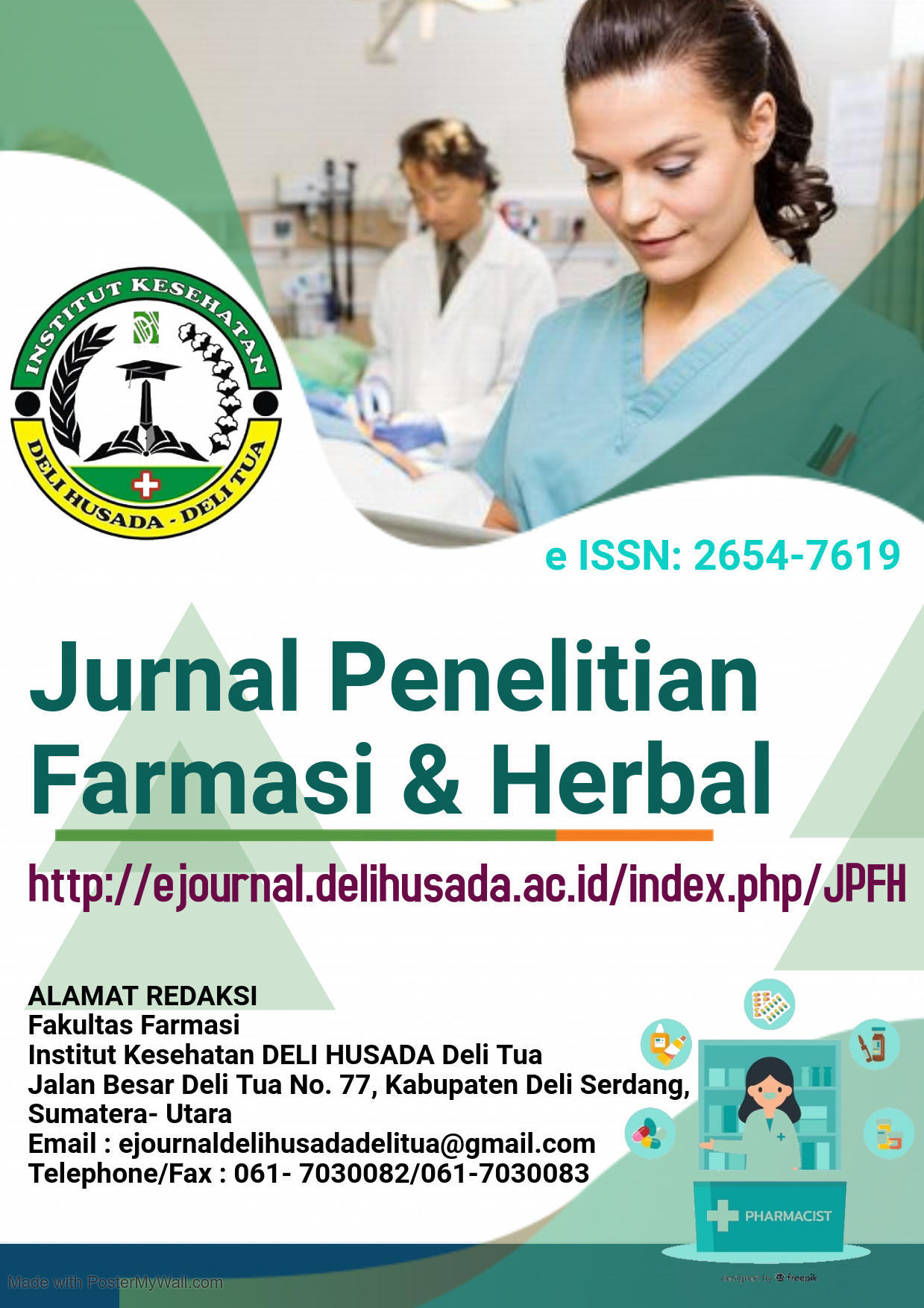Formulasi Dan Evaluasi Sediaan Krim Pewarna Rambut Dari Ekstrak Etanol Umbi Bit (Beta vulgaris L.)
Formulasi Dan Evaluasi Sediaan Krim Pewarna Rambut Dari Ekstrak Etanol Umbi Bit (Beta vulgaris L.)
Abstract
The use of natural hair dyes is a solution to the problem of synthetic hair dyes. one of the plants such as beetroot contains a lot of secondary metabolites, one of which is flavonoids which can provide specific dyes. The natural color found in beetroot can be used as a natural dye in cosmetics. To find out at what concentration the beetroot produces the most optimal quality physical color of the hair dye preparation. This research method was carried out including making beetroot (Beta vulgaris L.) ethanol extract by maceration for 5 days with 95% ethanol solvent and continued remeseration with the same solvent. The extract formula used was 10%, 15%, and 20% physical evaluation carried out included organoleptic test, irritation test, pH test, homogeneity test, stability test for washing, stability test for sunlight. As a result of inspection of the three hair dye cream formulations, the formulations met the requirements of the test formulations. The results of the hair tack test showed that it gave a good color at a density of 20% time. In the color stability test of the wash after 15 shampoo washes, all three formulations have a fixed color up to 9 washes. Also, in terms of color stability to sunlight, after exposure to direct sunlight, the color appears to change slightly, making the hair darker than before. The result of the concentration of beetroot ethanol extract that gives the best color is a concentration of 20%.
Downloads
References
Ditjen Pom. (1979). Farmakope Indonesia. Edisi Ke-Tiga. Jakarta: Departemen Kesehatan Ri. Hal. 33
Ditjen Pom. (1979). Farmakope Indonesia. Edisi Ke-Tiga. Jakarta: Departemen Kesehatan Ri. Hal. 33
Ditjen POM. (1985). Formularium Kosmetika Indonesia. Jakarta: Departemen Kesehatan RI. Hal. 208 - 219, 83 - 86, 96, 105.
Ditjen POM. (1995). Farmakope Indonesia. Edisi Ke-empat. Jakarta: DepartemenKesehatan RI. Hal. 1192-1193, 1199.
Masturi, Dkk. (2016) Pengaruh Pewarnaan Terhadap Kelunturan Warna Rambut Menggunakan Pewarna Alami Limbah Biji Pepaya Terhadap Pencuciaan. Universitas Negri Semarang. Vol 5.
Nelvita Mei, Dkk. (2016). Uji Kadar Betasianin Pada Buah Bit ( Beta Vulgaris L) Dengan Pelarut Etanol Dan Pengembangannya Sebagai Sumber Belajar Biologi. Universitas Muhammadiyah Malang. Vol 2
Paryanto dan Hans A.P. (2015). Zat Warna Dari Getah Tangkai Daun Pisang(Musa SSP). Ekuilibrium. 14(02): Halaman 40-41.
Ulfha Maria,Dkk. (2017). Formulasi Pewarna Rambut Dari Biji Pepaya (Carica papaya L.) Dalam Bentuk Sediaan Gel. Sekola Tinggi Farmasi Bandung. Vol 1 (2)







